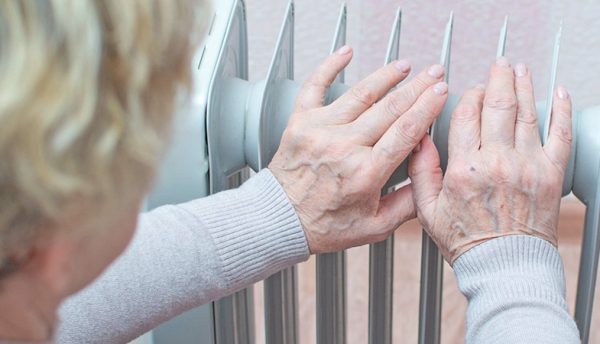In this article by Nick Weston, Chief Commercial Officer at Lilli, we explore how remote technology is transforming temperature controls in homes for the elderly and other public and private healthcare locations, preventing temperature-related illness.
As we enter the winter months, workers across the health and social care sector will be preparing for inevitable challenges posed by seasonal illnesses and plummeting temperatures. This puts huge pressure on an already overwhelmed care system and vastly impacts the system’s ability to deliver vital services. Put simply, the health risks to the most vulnerable and elderly people in society will inevitably increase this winter.
Fuel poverty – whereby people cannot afford to heat and power their homes – is a very real challenge for many. A staggering 13 million households kept their heating switched off during some of the coldest months of the year last winter according to Which due to rocketing energy bills and being pushed into a state of poverty due to the ongoing cost of living crisis. This is the harsh reality many people are faced with as temperatures drop over the coming months, putting those who are already vulnerable at an even higher risk. Stark figures released by the End Fuel Poverty Coalition showed that 1,000 deaths were caused by cold homes last year. This is unacceptable.
Furthermore, our own data shows that some homes reached as low as five degrees last winter – with more than 60% of people at risk of low home temperatures between December 2022 and January 2023. To put this into context, the World Health Organisation recommends a safe indoor temperature for the general population of 18 degrees. The harm these plummeting temperatures could cause to an elderly person is stark; low body temperatures among seniors can lead to a cascade of other health risks such as raised blood pressure, lower resistance to respiratory infections, sleep disruption, depression, anxiety and isolation.
The government has stepped in by announcing multiple packages of support which, although welcome, will only scratch the surface. With a new Health and Social Care Minister recently appointed, we would urge the government to put these very real challenges at the heart of its agenda (along with some of the broader challenges like system overwhelm). Everyone should have the right to a warm, dry home that they can afford to heat.
But decision-makers within the social care system can act now to tackle some of these challenges and reduce the risk to life this winter.
Our new winter care fund allows access to up to £1,000,000 of matched funding in order to procure and roll out remote monitoring technology to address some of the main challenges within the care system – supporting organisations that wish to improve conditions using a proactive, sensor-based solution.
By adopting remote monitoring technology like Lilli, local authorities and adult social service teams can be on the front foot and spot behavioural signs of health decline – as well as conditions like low temperatures – which suggest people may be struggling without carers being present. This allows caregivers the opportunity to intervene early before an individual’s health starts to decline and focus precious resources where they are most needed.
Around the country, evidence is building to show the impact that Lilli is having across the UK. The remote monitoring technology has been rolled out through several successful pilot schemes via local authorities, allowing caregivers the ability to monitor key indicators of health and wellbeing including eating and drinking, bathroom activity, movement and temperature. This helps to keep people in their own homes, preventing even greater pressure on over-stretched services this winter through emergency hospital admissions.
By taking this proactive step, local authorities, ICBs and caregivers can prioritise support and ensure warmth for those who need it most. This will in turn reduce the risk to life for the most vulnerable in society throughout the upcoming winter season.
In the short term, we can make a real difference in supporting the most vulnerable during the coldest months of the year and ensuring their homes stay heated. But longer term, implementing remote monitoring technology will be a catalyst for transforming the social care eco-system, piece by piece. The benefits will enable a ripple effect into the wider health system delivering better outcomes for the entire population.
Our successful pilots have proved that remote technology amplifies caregiver hours, accelerates hospital discharge rates and has the potential to save millions of pounds, allowing funds to be redeployed into areas where they are really needed. We need to break the cycle and put the right digital foundations in place now to prevent further harm and overhaul our gridlocked healthcare system. Only by adopting smart technology will we see real change.
Click below to share this article

